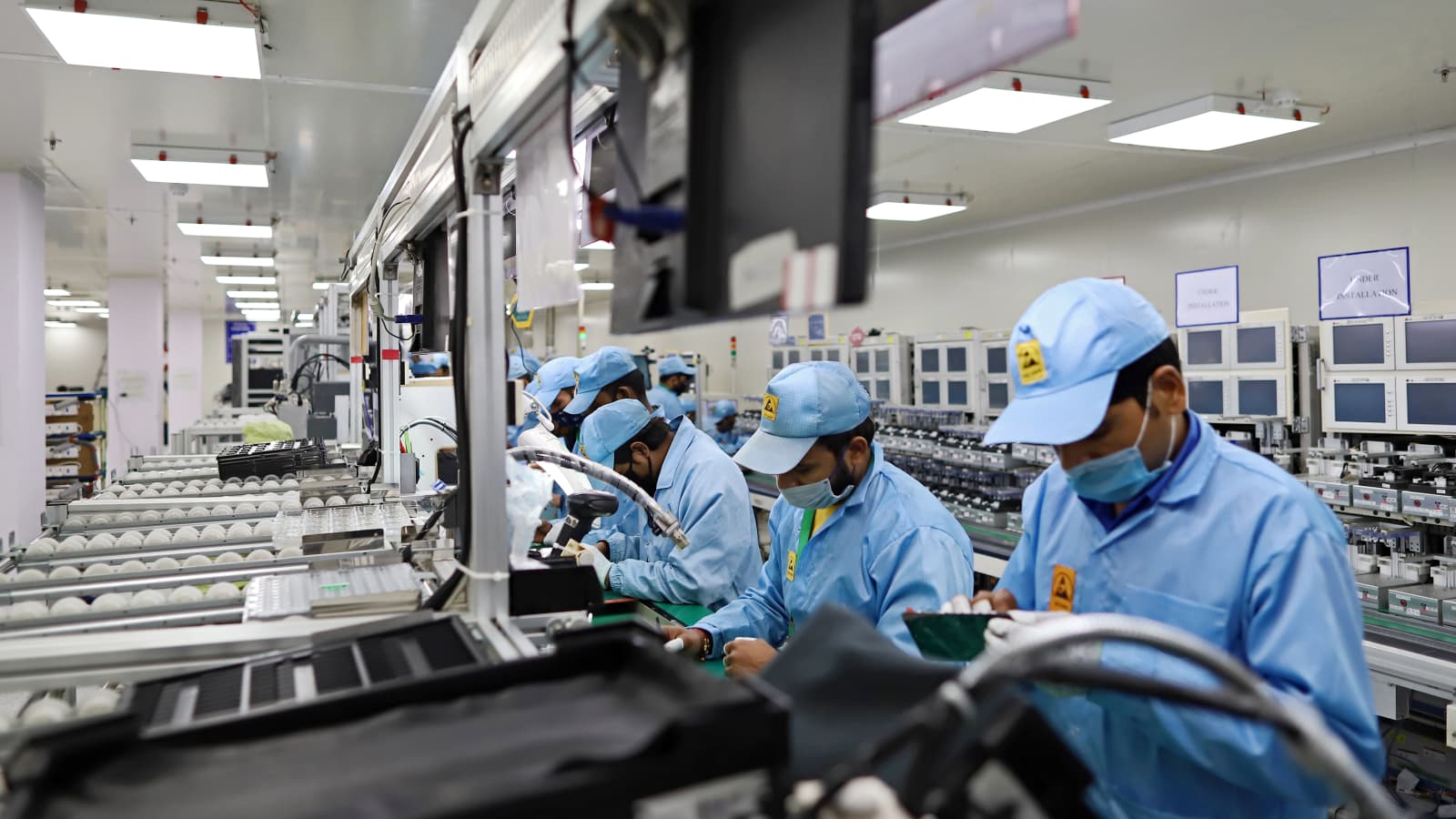India Surpasses China as Top U.S. Smartphone Exporter Amid Manufacturing Surge
India Surpasses China as Top U.S. Smartphone Exporter Amid Manufacturing Surge
By
David Goldfarb
Last updated:
July 29, 2025
First Published:
August 6, 2025

Workers assemble smartphones at Dixon Technologies’ Padget Electronics Pvt factory in Uttar Pradesh, India, on Jan. 28, 2021. | Bloomberg | Bloomberg | Getty Images
India Overtakes China in U.S. Smartphone Exports as Global Supply Chains Pivot
India has officially overtaken China as the leading exporter of smartphones to the United States, according to the latest data from research firm Canalys, signaling a massive shift in global manufacturing strategy and trade alignment. This development is largely driven by Apple’s rapid expansion of assembly operations in India and growing efforts by global electronics makers to diversify supply chains.
A Dramatic Shift: India’s Smartphone Exports Soar 240%
Smartphones assembled in India accounted for 44% of U.S. imports during the second quarter of 2025, a remarkable leap from just 13% in the same period last year. According to Canalys, this translates to a 240% year-over-year increase in total volume.
In contrast, China’s share in U.S. smartphone imports plummeted to 25%, down from 61% a year ago. Vietnam also climbed the ranks with a 30% share, placing it ahead of China in this quarter for the first time.
“The plan for India is moving ahead as fast as we can,” said Renauld Anjoran, CEO of Agilian Technology, a China-based electronics manufacturer now expanding to India.
Apple Leads the Push: India Becomes Core to iPhone Strategy
Much of this export surge has been driven by Apple, which has accelerated efforts to manufacture its devices in India amid rising geopolitical tensions and U.S.-China tariff uncertainty.
Apple’s goal: Produce one in four iPhones in India within the next few years. The company has already started assembling iPhone 16 Pro models in the country.
Despite the shift, Apple still relies heavily on China’s robust infrastructure to manufacture its premium devices. However, sources close to the supply chain indicate that Apple is gradually increasing its India-based production capacity to meet growing demand and reduce tariff risks.
Trump has repeatedly urged Apple CEO Tim Cook to move iPhone production to the U.S. While tariffs on Apple products have been temporarily suspended, experts warn that future levies could significantly impact prices and availability if exemptions are not renewed.
A Broader Supply Chain Strategy: More Companies Follow Suit
Apple is not alone. Samsung Electronics and Motorola have also begun shifting some smartphone assembly operations to India. However, Canalys reports their efforts are still limited in scale compared to Apple.
Final assembly—or “last-mile assembly”—has become a key component of this transition. Global manufacturers are now actively renovating or setting up facilities in India to meet demand from U.S. retailers.
Agilian Technology, based in Guangdong, China, is preparing trial production in India and plans to expand to full-scale manufacturing by the end of the year.
Tariffs Fuel the Realignment
This geographic shift is happening against the backdrop of rising trade barriers. In April, President Trump imposed a 26% tariff on Indian imports—a stark contrast to the triple-digit tariffs on Chinese goods at the time. Though the India tariffs have been temporarily paused, they underscore the U.S. administration’s commitment to “reciprocal” trade practices.
Trump’s administration cited concerns about “deceptive shipping practices” and illicit substances hidden in low-value packages, many of which originated from China.
Apple’s Sluggish Sales, But Bigger Strategy
While Apple has made bold moves in India, it hasn’t been immune to global headwinds. According to Canalys:
- iPhone shipments dropped 11% year-over-year in Q2 to 13.3 million units
- This follows a strong Q1 that saw 25% growth
- Apple shares are down 14% in 2025, pressured by slowing phone demand and rising competition in AI and devices
Still, the tech giant’s strategic push into India may offer insulation against rising tariffs and supply disruptions tied to China.
Looking Ahead: What This Means for the Global Smartphone Market
India’s rise in smartphone manufacturing marks a pivotal moment in global trade. The U.S. shift away from Chinese imports is not just symbolic—it reflects deeper changes in cost structures, political alliances, and consumer demand.
Analysts expect India’s share of the U.S. smartphone market to continue rising, especially if current tariffs stay in place beyond the August 1 deadline.
For now, the message is clear: India is no longer just an emerging manufacturing hub—it’s now a global export leader in the world’s largest smartphone market.
Popular articles
Subscribe to unlock premium content
Disney’s Timeless Magic and How the Entertainment Giant Continues to Shape Culture and Innovation

Imran Khan’s Economic Missteps Amid Political Chaos in Pakistan

The Philippines’ Digital Shift How Remittances and BPO Are Fueling Growth

Disney’s Timeless Magic and How the Entertainment Giant Continues to Shape Culture and Innovation

Imran Khan’s Economic Missteps Amid Political Chaos in Pakistan

Disney’s Timeless Magic and How the Entertainment Giant Continues to Shape Culture and Innovation









